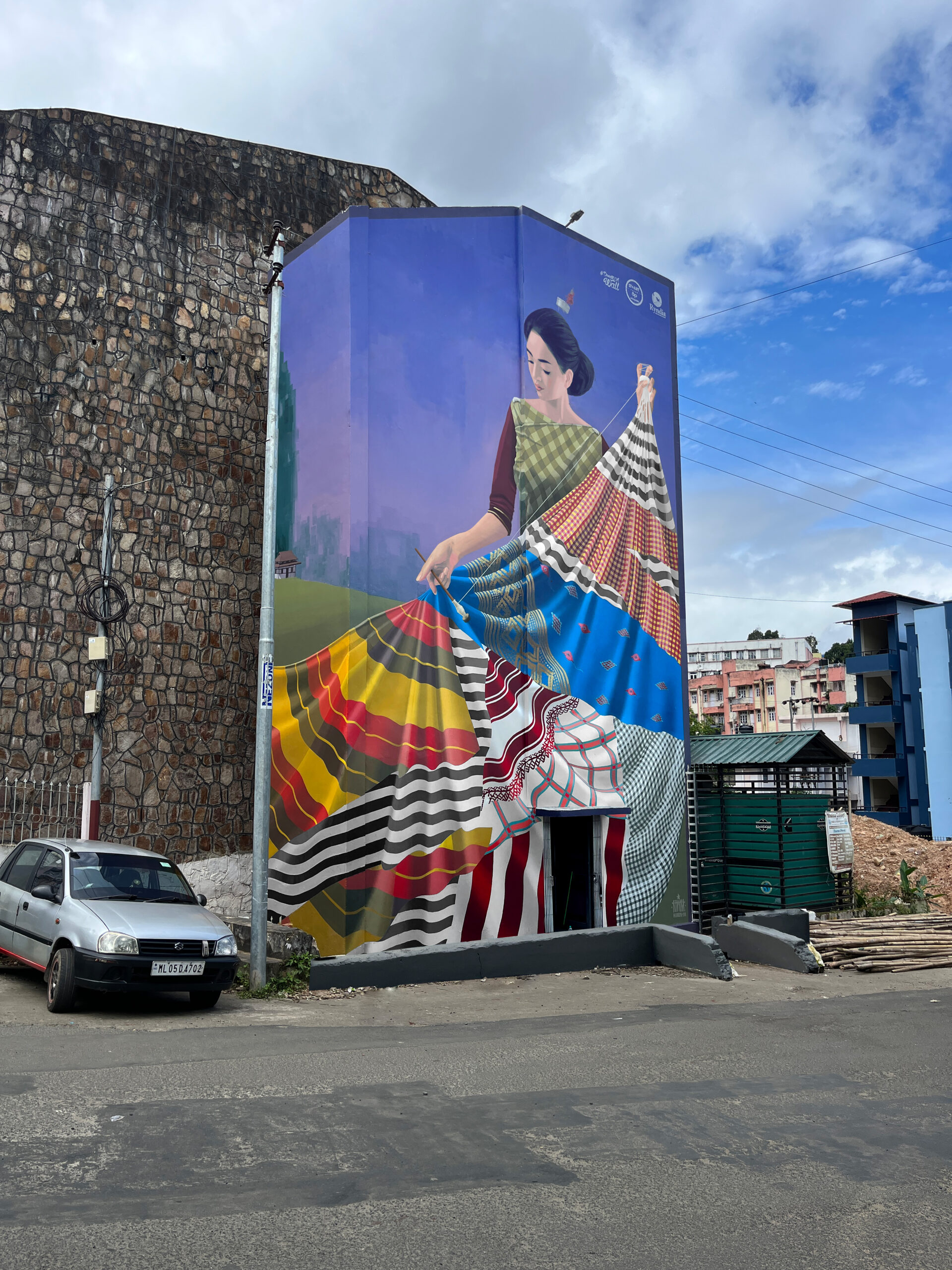Navjot Altaf, a name synonymous with contemporary art in India, reflects on her work, art, and journey leading up to Pattern – her first solo exhibition in the Arabian Peninsula, hosted by Ishara Art Foundation.
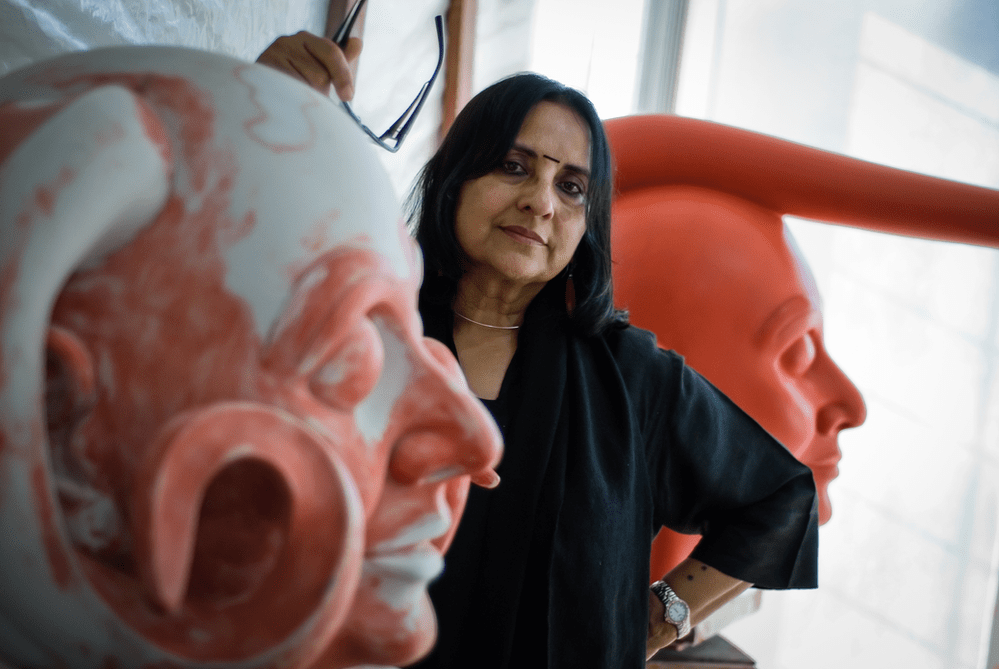
Born in 1949, Altaf lives and works between Mumbai and Bastar. This latest exhibition features site-specific installations, sculptures, videos, drawings and photo prints. It contextualizes and highlights Altaf’s longstanding commitment to issues of climate-change, ecology and feminism and the challenges they face in the digital age.
Where did it all begin? “Looking back, I see my practice based on my experiences, imagination and intellectual inquiry. After my studies [70’s], I joined a student’s organisation ‘PROYOM’ affiliated with the left party that had a study circle with emphasis on developing a culture of critical thinking.” says Altaf.
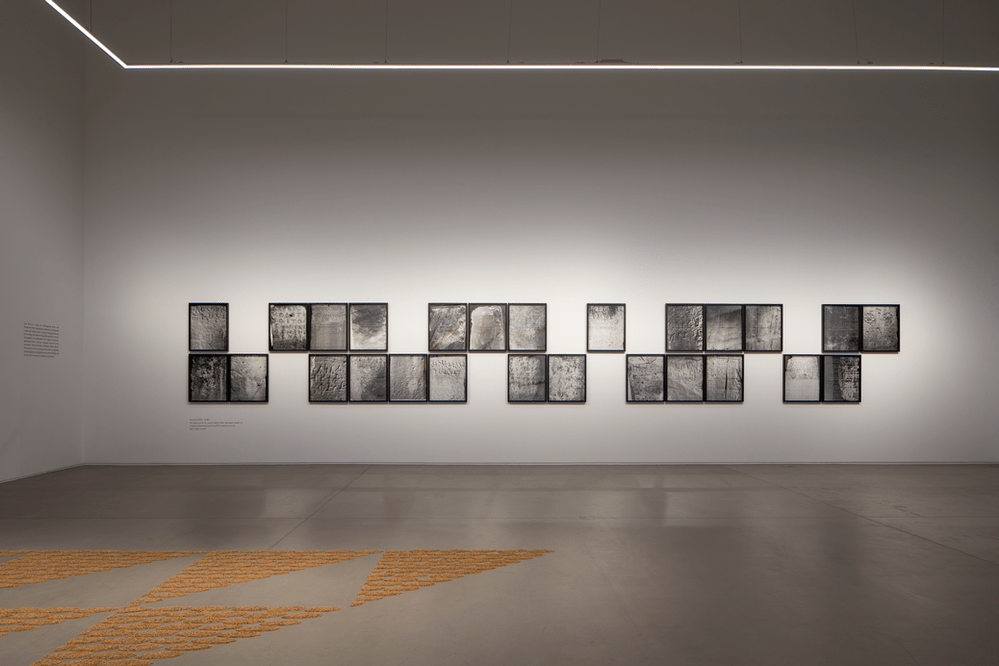
This political affiliation allowed her to “focus (at that time) on everyday life situations, engaging with students, workers’ struggle and interventions in non-art spaces.” This, she says, “was a self-conscious move” which brought her “into direct contact with people ”.
People, community, collaboration and the politics of art/craft debate lie at the heart of Altaf’s work.
”I view collaborations with people from different fields and socio-cultural and economic backgrounds as a form of creative praxis and what form of knowledge such practices can generate. How important it is to work towards developing a vision free of preconditioning” Altaf trails off and then adds, “in short, I have learnt both from practical experiences and theory.”
With Pattern she hopes to “stimulate the viewer to critically reflect on why we cannot ignore the fact that the model for progress insensitively followed by the humans over the globe, to create a better and better world for themselves, has not been beneficial to the environment”.
How do we as a human race think and act? What makes us act like we are above Nature itself?
“Progress has to be understood in relation to its influence on the ecosystem.” — Navjot Altaf to Art Fervour.
Interconnectedness and interdependence are themes that run through this exhibition.
In this context Altaf talks about an installation in the exhibition entitled ‘How Perfect Perfection Can Be’. She says, this installation recognizes the human imagination, innovations and achievements, through the hand painted architectural forms, at another; it points out the consequences and the risks being manufactured by the human activities.
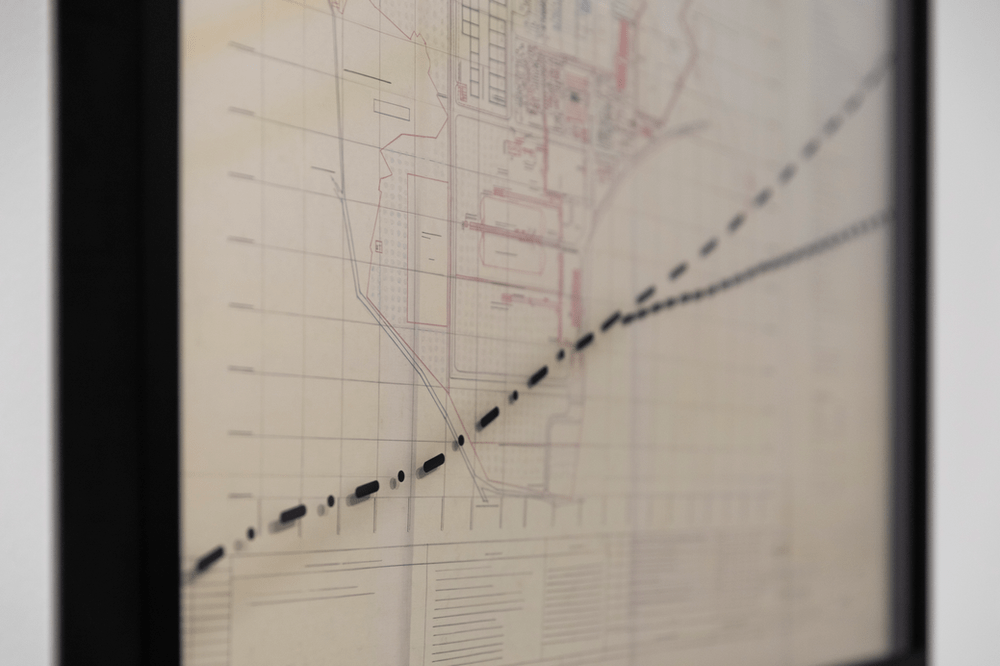
Altaf further elaborates on this interconnectedness and tells us about the time she spent in the village of Nagarnar in Chhattisgarh. Nagarnar is known for two things: its sophisticated weaving techniques and its steel plants. Having spent a considerable period of time with the weavers community there Altaf has witnessed how the gradual acquisition of indigenous land to build more steel plants, affected mineral rich land, polluted natural water resources, killed various life forms, local economy and the culture of people. The village, Altaf says, “is being destroyed”.
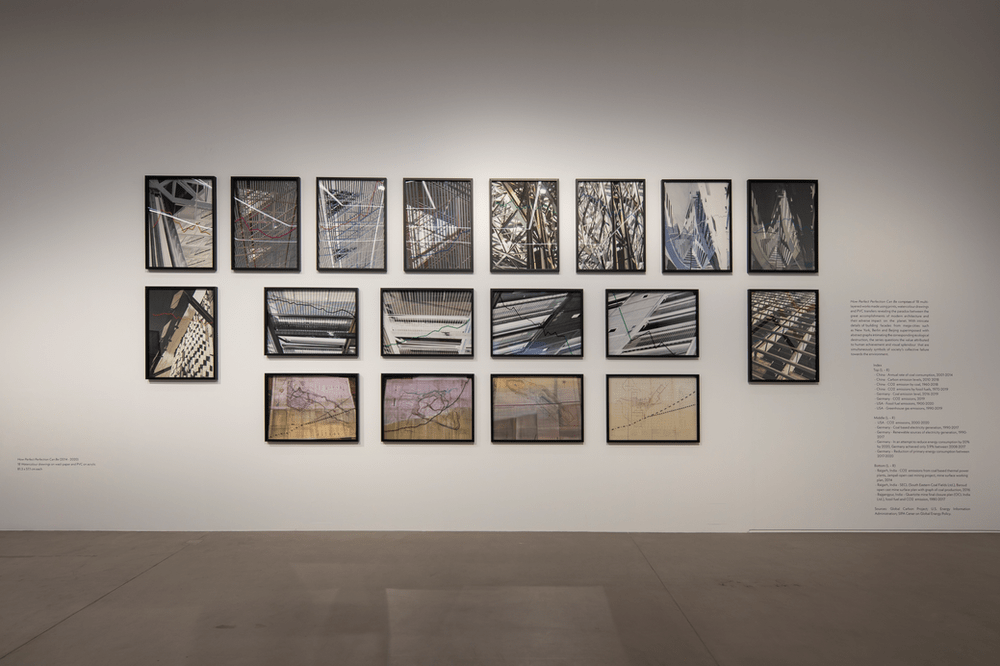
Sabih Ahmed, Ishara’s Associate Director and Curator visualises ‘Pattern’ as the centrepiece of this exhibition. A triangular installation on the floor made out of rice seeds, as a connecting element between all the works in the exhibition.
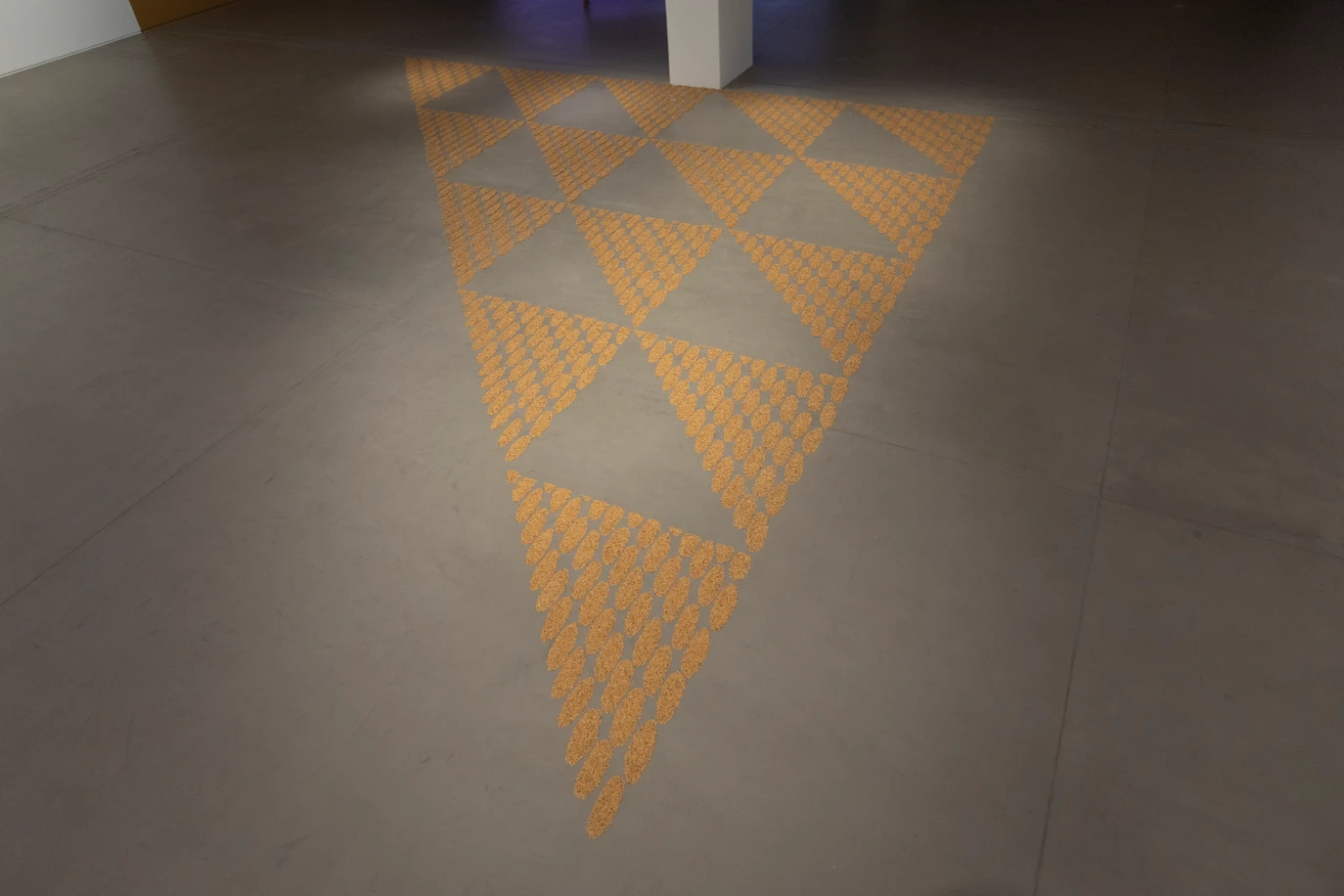
This particular installation reflects the artist’s concerns about processes and patterns of development and sirens a cautionary tale for the human race – if the patterns of human development are ignored and continue to threaten “fragile interdependencies”, the environment will be destroyed.
Bringing us back to the heart of Altaf’s craft – people, community, collaboration and the politics of artistic debate. Her experience of learning from diverse knowledge systems, past and present, and non-linear sources and thought processes propel her to explore this further. Altaf expresses wanting to continue developing her sensibilities to understand the interconnectedness of this multi-species world and what it all means.


